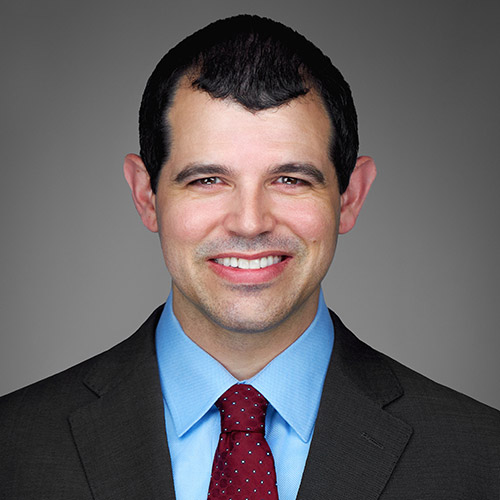Brain Tumor Care > Acoustic Neuroma
A trusted team approach for over 30 years
Each year we treat more than 160 patients with acoustic neuroma or neurofibromatosis (NF-2). By collaborating with major health systems throughout the region, we offer all available treatment options: surgery, radiosurgery, and watch-and-wait (observation), as well as balance and facial restoration treatments.
We discuss all acoustic neuroma cases with your hospital's multidisciplinary tumor board, a team of specialists that includes neurosurgeons, radiation oncologists, otologists, otolaryngologists, and physical medicine and rehabilitation specialists. Together, we share our opinions and then synthesize them into a recommended treatment strategy for you.
Advances in technology give Mayfield neurosurgeons unprecedented access to acoustic neuroma tumors, while allowing us to operate without harming delicate structures and cranial nerves. Radiation technologies like Gamma Knife allow us to treat some acoustic neuromas without making any incision at all. We seek to eliminate as much tumor as possible while preserving neurologic function, including hearing and the function of the facial nerve.
About acoustic neuromas
An acoustic neuroma is a tumor that grows from the nerves responsible for balance and hearing. These tumors grow from the sheath covering the vestibulocochlear nerve. Acoustic neuromas are benign (not cancer) and usually grow slowly. Over time the tumor can cause gradual hearing loss, ringing in the ear, and dizziness. Because of their slow growth, not all acoustic neuromas need to be treated. Treatment options include observation, surgery, and radiosurgery.
Learn more
In the past 5 years, Mayfield has seen 497 patients with acoustic neuromas and treated 149 new patients — making Mayfield a leading treatment program for these complex tumors.

The goals of treatment are to remove or halt the growth of the tumor while preserving facial nerve function and useful hearing (if not already deaf). Symptom resolution is highly dependent on tumor size and if it is touching the brainstem. Consistent with the literature,1.2 Mayfield's patients have 91% resolution of their symptoms and 94% have improved or full activity level.
Mayfield participates in meaningful large-scale clinical research on a national level by working with research consortiums including the International Radiosurgery Research Foundation (IRRF) and the NeuroPoint Quality Outcomes Database (QOD). These efforts establish benchmarks and generates data to improve the quality of care for all brain tumor patients.

- Bin-Alamer O … Warnick RE, et al. Vestibular Schwannoma International Study of Active Surveillance Versus Stereotactic Radiosurgery: The VISAS Study. Int J Radiat Oncol Biol Phys. 2024 Apr 7:S0360-3016(24)00482-6.
- Kosty JA, Gozal YM, DiNapoli VA, et al. Middle Fossa Approach for Resection of Vestibular Schwannomas: A Decade of Experience. Oper Neurosurg (Hagerstown). 2019 Feb 1;16(2):147-158.
- Lipschitz N … Dinapoli VA, et al. Obesity Is Not Associated With Postoperative Complications After Vestibular Schwannoma Surgery in a Large Single Institution Series. Otol Neurotol. 2019 Dec;40(10):1373-1377.
- Kohlberg GD … Dinapoli VA, et al. Application of Ultrasonic Bone Aspirator for Decompression of the Internal Auditory Canal via the Middle Cranial Fossa Approach. Otol Neurotol. 2019 Jan;40(1):114-120.
- Anaizi AN, DiNapoli VV, et al. Small Vestibular Schwannomas: Does Surgery Remain a Viable Treatment Option? J Neurol Surg B Skull Base. 2016 Jun;77(3):212-8.

 513-221-1100
513-221-1100







